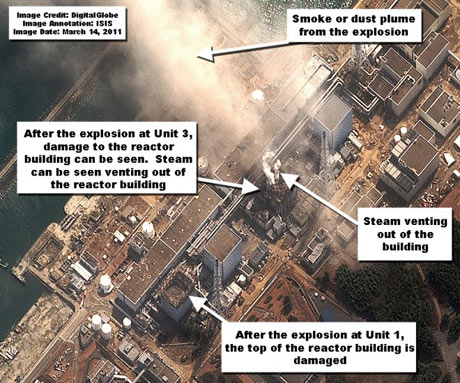ISTC Governing Board Allocates $2M to Assist in Fukushima Cleanup

The ISTC Governing Board has approved during its meeting in Moscow on 28th June the creation of a special program to assist with cleaning up at the Fukushima nuclear power plant following the earthquake and tsunami. Two million dollars have been allocated to support expert meetings and travels, to help identify technologies and know-how available in CIS countries, and to help with technology transfer if needed.
The 'Cooperation and Support Program for Nuclear Safety, Emergency Preparedness, Response, Rehabilitation, Remediation, and Monitoring' was initiated on request from the Japanese Government. Four areas of collaboration were identified by the Japanese Party: medium-long term management of waste and contaminated areas, remediation of contaminated land, long term impacts of contamination, and materials for decontaminations. More precise needs and forms the collaboration will take will be formulated in the upcoming months.
ISTC has identified over a hundred projects, which results could be useful in the Fukushima cleanup. A significant amount of ISTC projects have provided analysis and tools for remediation of soil and waters contaminated with radionuclides. ISTC projects have worked on radiological pollution from Chernobyl, from the nuclear bomb test site of Semipalatinsk in Kazakhstan, from the Mayak nuclear facilities (Russia) that leaked in the surrounding river basin, as well as various uranium tailings throughout the former Soviet Union.
The Fukushima Daiichi nuclear accident is a series of equipment failures, nuclear meltdowns, and releases of radioactive materials at the Fukushima I Nuclear Power Plant, following the 9.0 magnitude earthquake and tsunami on 11 March 2011. The plant comprises six separate boiling water reactors maintained by the Tokyo Electric Power Company (TEPCO). This nuclear accident is considered by many experts to be the second largest after the Chernobyl disaster, but more complex as multiple reactors are involved.

